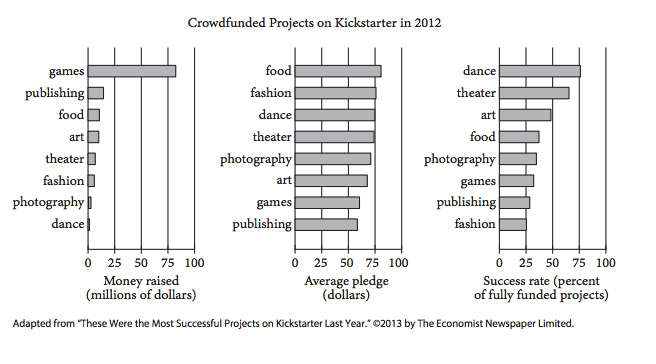Direction:- Each passage below is accompanied by a number of questions. For some questions, you will consider how the passage might be revised to improve the expression of ideas. For other questions, you will consider how the passage might be edited to correct errors in sentence structure, usage, or punctuation. A passage or a question may be accompanied by one or more graphics (such as a table or graph) that you will consider as you make revising and editing decisions.
Some questions will direct you to an underlined portion of a passage. Other questions will direct you to a location in a passage or ask you to think about the passage as a whole.
After reading each passage, choose the answer to each question that most effectively improves the quality of writing in the passage or that makes the passage conform to the conventions of standard written English. Many questions include a “NO CHANGE” option. Choose that option if you think the best choice is to leave the relevant portion of the passage as it is.
Rethinking Crowdfunding in the Arts
Crowdfunding is a popular way to raise money using the Internet. The process sounds simple: an artist, entrepreneur, or other innovator takes his or her ideas straight to the public via a crowdfunding website. The innovator creates a video about the project and offers, in exchange for donations, a series of “perks,” from acknowledgment on a social media site to a small piece of art. Many crowdfunding programs are all-or-nothing; in other words, the innovator must garner 100 percent funding for the project or the money is refunded to the donors. At Q1 it’s best, the system can give creators direct access to millions of potential backers. The home page of one leading crowdfunding site features a project to manufacture pinhole cameras on a 3‑D printer.
Q2 The idea is obviously very attractive. An obscure method of photography may be made available to many with little expense. Within weeks, the project was 621 percent funded. In contrast, on the same page, a small Brooklyn performance venue is attempting to raise money for its current season. The venue features works of performance art showcased in a storefront window. Those who have seen the space consider it vital. Q3 However, that group may not be large enough; with just fourteen days to go in the fund-raising period, the campaign is only 46 percent funded.
Artists such as these Brooklyn performers find that crowdfunding exacerbates problems that already exist. Q4 Work, that is easily understood and appreciated, is supported, while more complex work goes unnoticed. Q5 Time that could be used creating art is spent devising clever perks to draw the attention of potential contributors. Q6 In addition, audiences may contain many “free Q7 riders,” they did not make contributions. Ironically, the success of crowdfunding may weaken overall funding for the arts if people begin to feel that paying for the art Q8 loved by them is someone else’s responsibility.
[1] One innovative playwright has woven the deficiencies of the system into her crowdfunding model. [2] Though the price for her tickets was higher than that of tickets for comparable shows, it was still affordable to most theatergoers—and reflected the real cost of the performance. [3] She presented the total cost for producing her play on a crowdfunding site. [4] Then she divided the total cost by the number of people she expected to attend the performance. [5] The result of the calculation was the minimum donor price, and only donors who paid at least the minimum ticket price were allowed to attend the performance. [6] By subverting the presumption that money used for her project is an altruistic donation, the playwright showed that Q9 our work has monetary value to those who enjoy it. Q10

Question Q11 asks about the graphic.